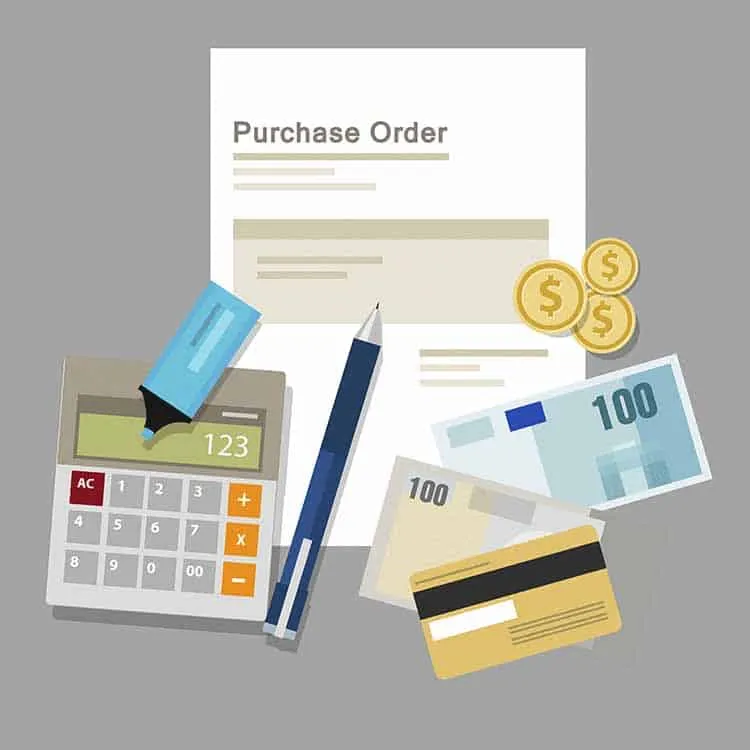What Are Purchasing KPIs? | The Ultimate Guide with Examples & Metrics

If your procurement team is still measured solely on cost savings, you're not just flying blind—you're leaving immense value on the table. For modern procurement leaders, the function has radically evolved from a tactical cost center to a strategic value driver. But you can't manage what you don't measure.
So, what are purchasing KPIs? Purchasing Key Performance Indicators (KPIs) are a set of quantifiable metrics used to evaluate and monitor the efficiency, effectiveness, and strategic alignment of an organization's procurement activities. They translate complex procurement operations into clear, data-driven insights, enabling leaders to optimize spending, mitigate supplier risk, ensure quality, and demonstrably contribute to overarching business goals.
This definitive guide moves beyond basic definitions. We will explore a comprehensive framework of procurement KPIs, illustrate how to implement them with real-world examples, and reveal how to leverage them to position your procurement function as a core strategic asset.

Understanding the "what" is futile without the "why." Implementing a robust KPI framework is not about micromanagement; it's about empowerment and strategic alignment.
From Reactive to Proactive Management: KPIs provide early-warning signals. A sudden dip in a supplier's on-time delivery rate or a spike in quality rejects allows you to address issues before they escalate into costly supply chain disruptions.
Data-Driven Decision Making: Gut feeling has no place in modern procurement. KPIs replace intuition with hard data, strengthening your position in supplier negotiations, justifying investments in new technology, and guiding strategic sourcing decisions.
Enhanced Accountability and Performance: Clear metrics set unambiguous expectations for both your internal team and your external suppliers. This fosters a culture of continuous improvement and performance excellence.
Demonstrating Procurement's Value: Tangible KPI data is your most powerful tool for communicating procurement's contribution to the C-suite. Moving beyond "money saved" to show your impact on risk reduction, innovation, and operational efficiency secures your seat at the strategic table.
The graveyard of failed procurement strategies is littered with teams that measured everything but achieved nothing. The goal is not to track every possible metric but to track the right ones.

Your KPIs must be a mirror of your company's strategy. If the corporate goal is market expansion, your KPIs should focus on supplier capacity, lead times, and innovation. If the goal is operational resilience, prioritize supplier risk management and diversification. This ensures procurement is not an isolated function but an integral driver of business success.
Every KPI you adopt must be
Specific: Target a precise area (e.g., "reduce supplier lead time," not "improve suppliers").
Measurable: Quantify the outcome with a formula.
Achievable: Set ambitious but realistic targets.
Relevant: Directly tied to a strategic objective.
Time-bound: Set a clear deadline for achievement.
Start with a focused set of 5-8 truly strategic KPIs. A dashboard cluttered with dozens of metrics dilutes focus and obscures what truly matters. You can expand later as your data maturity grows.
To effectively manage performance, you must measure across multiple dimensions. Here is a categorized breakdown of essential procurement KPIs, complete with formulas and strategic context.
Focus: Direct financial impact and value capture.
|
KPI |
Formula & Example |
Strategic Insight |
|---|---|---|
|
Cost Savings |
|
Tracks tangible "hard savings" from negotiations, consolidation, and strategic sourcing. Example: "Achieve a 7% cost reduction on direct materials spent in H2." |
|
Cost Avoidance |
|
Measures "soft savings" by preventing future cost inflation. Example: "By negotiating a 3-year fixed-price contract, we avoided a projected 12% market price increase." |
|
Procurement ROI |
|
The ultimate measure of the procurement function's efficiency. A ratio of 5:1 or higher indicates a high-performing team. |
Focus: Quality, reliability, and partnership value.
|
KPI |
Formula & Example |
Strategic Insight |
|---|---|---|
|
Supplier Defect Rate |
|
A direct measure of incoming quality. A rising rate signals production issues at the supplier and risks your product quality. |
|
On-Time Delivery (OTD) Rate |
|
Critical for lean manufacturing and inventory management. Delays halt production and increase safety stock costs. |
|
Supplier Availability |
|
Assesses a supplier's ability to respond to emergency or surge demands, a key resilience metric. |
Focus: Internal process excellence and agility.
|
KPI |
Formula & Example |
Strategic Insight |
|---|---|---|
|
Purchase Order Cycle Time |
|
Measures the efficiency of your internal workflows. Long cycle times delay projects and can force maverick spending. |
|
Emergency Purchase Ratio |
|
An indicator of poor planning and forecasting. A high percentage points to uncontrolled maverick spending and higher costs. |
|
Spend Under Management (SUM) |
|
Perhaps the most critical holistic KPI. It measures the extent of your control over total spend. Low SUM means high maverick spending and missed savings opportunities. |
Focus: Mitigating exposure and ensuring adherence.
|
KPI |
Formula & Example |
Strategic Insight |
|---|---|---|
|
Contract Compliance Rate |
|
If you negotiate great terms but nobody uses them, you save nothing. This measures the effectiveness of your contract rollout and management. |
|
Number of Single-Source Suppliers |
|
Identifies critical dependency risks. A high number requires a mitigation strategy (e.g., dual-sourcing, safety stock). |
Focus: Sustainable and ethical value creation.
|
KPI |
Example |
Strategic Insight |
|---|---|---|
|
Supplier Diversity Spend |
|
Drives innovation, reflects social values, and can often provide a more resilient and competitive supply base. |
|
ESG Compliance Rate |
|
Mitigates reputational risk and future-proofs your supply chain against tightening environmental regulations. |
You cannot measure what you cannot see. Integrate data from your ERP, P2P systems, supplier portals, and even invoices into a single source of truth. Manual Excel tracking is prone to error and not scalable. Invest in a dedicated procurement analytics or spend management platform (e.g., Sievo, Precoro) for automated data aggregation.
Transform raw data into insights. Use dashboards (in Power BI, Tableau, or your procurement software) to create a real-time, at-a-glance view of your core KPIs. This allows for immediate trend spotting and anomaly detection.
Data without discussion is worthless. Institute mandatory monthly operational reviews with your team and quarterly strategic reviews with key stakeholders. Don't just report the numbers; ask "why?" behind every significant change.
Step 4: Close the Feedback Loop
Use your KPI insights to drive action. Celebrate suppliers who excel and collaborate with those who are underperforming to create corrective action plans. Internally, use the data to refine processes, update policies, and train staff.
Vanity Metrics: Avoid metrics that look good on paper but don't drive decisions (e.g., number of POs processed). Every KPI must have a clear owner and a defined action attached to it.
Lack of Context: A number in isolation is meaningless. A 95% OTD rate is good, but if the industry benchmark is 98%, it's a problem. Always benchmark against past performance, industry standards, and stated goals.
Using KPIs as a Weapon: The goal is improvement, not punishment. Foster a blame-free environment where data is used to diagnose root causes and collaboratively find solutions with your team and suppliers.
Purchasing KPIs are the language of modern strategic procurement. They are the bridge between tactical execution and value-driven leadership. By moving beyond simplistic cost metrics and adopting a balanced, strategic scorecard, you empower your team to not just save money but to drive innovation, build resilient supply chains, and unequivocally prove procurement's indispensable role in achieving corporate objectives.
Stop flying blind. Start measuring what matters.
Q1: How often should we review and potentially change our procurement KPIs?
A: Conduct a formal review of your KPI framework at least annually. However, be prepared to adapt sooner if your company undergoes a significant strategic shift, such as entering new markets, a major merger or acquisition, or a change in core product lines. Your KPIs must always reflect current business objectives.
Q2: What's the biggest hurdle when first implementing a KPI system, and how can we overcome it?
A: The most common hurdle is data fragmentation. Spend and supplier data is often siloed across different departments (IT, marketing, operations) in various formats. To overcome this, start with a single, high-impact category where data is relatively accessible. Use this as a pilot project to demonstrate value and build the case for a centralized procurement analytics tool.
Q3: How do we get buy-in from other departments who are resistant to being measured on new KPIs?
A: Frame KPIs as a tool for empowerment, not control. Show departments how data can help them: marketing can prove the ROI of their software spend, operations can guarantee supply for their projects. Involve them in the goal-setting process to ensure the KPIs are relevant to their success, making them collaborators rather than subjects of measurement.
Q4: Are there industry-specific KPIs that manufacturing companies should prioritize over others?
A: Absolutely. While cost metrics are universal, manufacturers should place extreme emphasis on Supplier Lead Time Variance and Perfect Order Fulfillment. Lead time stability is critical for lean inventory practices like JIT (Just-In-Time), and measuring the percentage of orders that arrive on time, in full, undamaged, and with correct documentation directly impacts production line efficiency.
Q5: For a small business with limited resources, which 3 KPIs should they start with?
A: Focus on the fundamentals: (1) Spend Under Management (% of total spend you actively control), (2) Average Payment Term Accuracy (are you paying according to agreed terms to avoid fees or missed discounts?), and (3) Top Supplier Concentration Risk (what % of your spend is with your top 3 suppliers?). These three provide maximum insight for minimal tracking effort.
Q6: How can we effectively measure the "soft" benefits of procurement, like innovation or risk mitigation?
A: Use qualitative KPIs to quantify these areas. For innovation, track metrics like "Number of new ideas or process improvements sourced from suppliers annually." For risk, measure "Percentage of critical suppliers with completed and up-to-date risk assessments." This turns abstract concepts into trackable, manageable metrics.
Q7: Our supplier performance scorecards are ignored. How can we make them more actionable?
A: Move from a report card to a collaboration tool. Instead of just sending a scorecard, schedule a quarterly business review (QBR) with strategic suppliers. Use the KPI data as the agenda to discuss root causes of issues and co-create improvement plans. This transforms the dynamic from punitive to partnership-focused, driving real change.
Q8: What is a common KPI mistake that even mature procurement teams make?
A: A common mistake is focusing on lagging indicators only (e.g., cost savings achieved). Leading indicators are predictive. For example, tracking the "Number of sourcing events conducted before a contract expires" is a leading indicator that proactively prevents maverick spending and ensures future savings. Balance your dashboard with both types.
Q9: How should we handle a situation where a KPI suggests a supplier is failing, but our qualitative experience is positive?
A: The data is a signal, not a verdict. Use it to start a conversation. Present the KPI data to your supplier and ask for their perspective. There may be a valid reason (a one-time event, a data error on your end) you weren't aware of. This approach is respectful and often reveals deeper operational insights that pure data can miss.
Q10: Is there a KPI to measure the efficiency of the procurement team itself?
A: Yes, consider tracking Sourcing Cycle Time—the average number of days from identifying a need to signing a contract. A shortening cycle time indicates improved internal processes, better stakeholder management, and more effective negotiation, showing the team is working smarter, not just harder.
Contact us
Call Us: +86 193 7668 8822
Email:[email protected]
Add: Building B, No.2, He Er Er Road, Dawangshan Community, Shajing Street, Bao'an District, Shenzhen, China